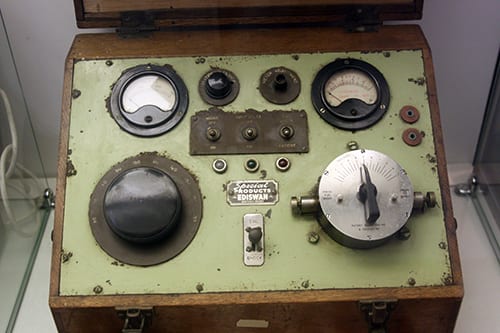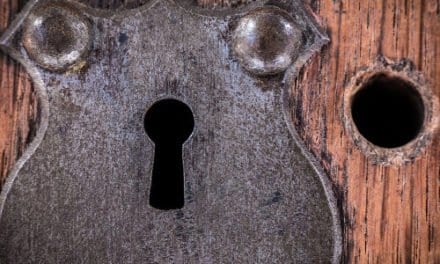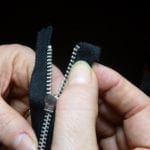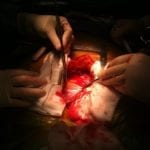The Shock
The hospital rises up out of the fields as if it has been planted there. Nobody in sight and the parking lot only has a few cars. All the better as far as I am concerned. I don’t want to run into any other workers from the refinery, and that can happen in a small town.
I try to put a sad expression on my face. It may be laying it on a little thick, but nobody can say I don’t have depression once I get the medical treatments. A couple of treatments and I’ll be collecting disability, set for life. Like all those freeloaders collecting money for something like depression—which doesn’t even exist—and I’ll finally be able to get in on the action.
I push through the revolving door and find the surgical unit. No one else is waiting there. The door to the surgical suite opens and out comes a thin white woman in a traditional nurse’s uniform, white hat and all.
“You Bob?” she barks. I nod, trying not to stare at her get-up.
“I’m Nurse Crandall. Follow me.”
She trots back through the door and I hop up to catch the door before it swings shut. She leads me down a white hallway to a white room with the white curtain drawn back to show a white hospital bed.
“Put this on. Dr. B. will be see you in a minute.” She shoves an off-white gown with a dark blue diamond pattern on it into my hands.
I quickly put the hospital gown on and lie down, pulling the white sheet around me defensively, making sure I don’t flash anyone.
A male voice calls out gently, “Knock, knock.”
“Yeah?” I answer.
The curtain is pulled back and a white man in his sixties, balding and with black-rimmed glasses, enters. He wears a dark black suit and a white dress shirt that still has its crisp lines from ironing. He looks like an undertaker.
“I’m Dr. B,” he says. He carries a clipboard in his left hand and sticks out his right hand. His handshake is firm and ice cold.
The doctor flips over the top sheet on the clipboard.
“Just have to do the consent form. The attorneys, you know.” Dr. B. flashes a white toothy smile. “What is the date today?”
“June 24.”
“What are we doing for you today, Bob?”
“ECT.”
“And what’s that?”
“Electroconvulsive therapy.”
Nurse Crandall slips in and straps a blood pressure cuff to my arm. I try to ignore her. She shoves a thermometer in my mouth.
“Very good, Bob.” Dr. B. makes notations on the clipboard. “Did you know that we used to do this without medication. Patients could break bones during the seizure. In the 1940s and 50s. The good old days.”
I nod. “Yeah, the fifties. When this country really was something.”
He hands me the clipboard and points, “Sign there.”
I scrawl my name on the line.
Dr. B. takes back the clipboard and slips the pen in his coat. “Of course, the treatment has been around for centuries. We used to use camphor to induce the seizures, you know. Then we discovered electricity would do it.” He flashes his white teeth again. “A couple of electrodes to the head, sort of like Frankenstein.”
I’m not interested in a history lesson. I cough and try to look even sadder. “How long is this going to take, doc?”
“Just one more question. On a scale of 10 being suicidal and 1 being insanely happy, what number would you say you are?”
I don’t want anyone thinking I am suicidal, but I need to be depressed enough to be taken seriously by disability. “Eight. And a half,” I fudge. Easy money, here I come.
Dr. B. nods. “I’ll see you in a minute.”
Nurse Crandall raises the safety rails on either side of the bed. “Keep your arms and legs inside the vehicle,” she says. Her face is completely deadpan. She wheels me down the corridor and into the operating room. It is painted white.
Nurse Crandall pushes the hospital bed to the exact center of the room, near a table with a dark wooden box on it. She begins pulling out restraints attached to the bedframe and looping them around my waist, ankles and wrists.
“Is this really necessary?” I ask.
The nurse pulls the restraints tight. “We need to make sure it all goes as planned.”
“Knock knock.” Dr. B’s voice precedes his entrance into the operating room.
Nurse Crandall loosens my gown and begins placing white stickers with wires on my chest. Dr. B. squeezes some industrial-smelling clear blue gel on my head and presses a white sticker on the spot. Wires trail from my forehead to the dark wooden box.
I crane my neck to look around the bare operating room—no other doctors, nor even an anesthesia cart like there was when I got my gallstones out.
“When’s the other doctor coming?” I ask.
Dr. B. lifts the lid on the wooden box. He doesn’t look at me as he starts flipping switches. “What other doctor?” he asks.
“The anesthesiologist, of course.”
The meter on the box is lighting up and the dial moves. Dr. B. turns to answer me, “He won’t be coming.”
“What do you mean?” I shift in the bed, realizing that I can’t get out of the restraints.
“It’s very simple,” says Dr. B. “You want to be on disability and signed a consent form for treatment to make that happen. We aim to please here.”
Nurse Crandall smiles as I thrash in my restraints. I scream for help but my voice just echoes.
Dr. B. turns a dial. The meter lights up.
“You think being disabled means you’re on easy street,” he says. “Let’s see what it really means.”
He turns the dial on the wooden box all the way up as I scream and the seizure begins.






























